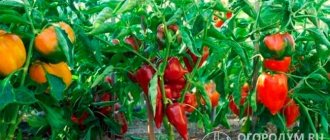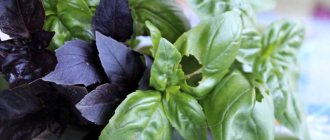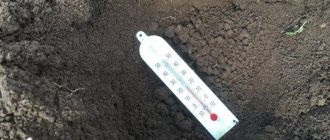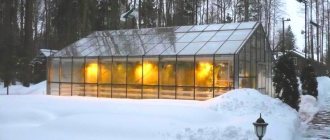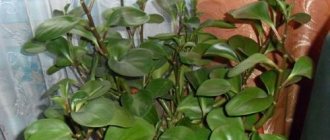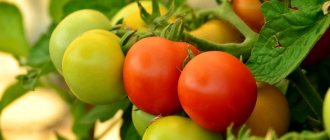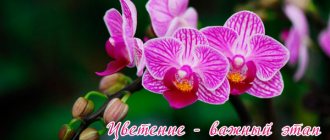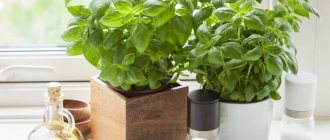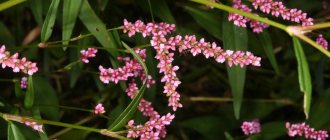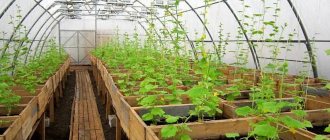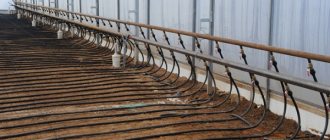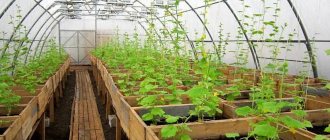Artificial pollination is one of the features of greenhouse cultivation of fruit and berry crops. In closed ground conditions, the natural process often becomes impossible or very difficult. In this case, to form a sufficient number of ovaries, the gardener has to resort to various tricks. The volume and quality of the future harvest largely depend on the successful implementation of these operations.
Bee - pollinator of cucumber
How to create conditions for pollination in a greenhouse
In open ground conditions, pollination is a natural process. A couple of whiffs of wind and a few pollinating insects fluttering between the flowers quickly do their job. But in a greenhouse this can be problematic because ventilation conditions are not as favorable as in open areas, and insects do not have easy access to greenhouse plants. There are two methods of pollination in greenhouses:
- Naturally - creating favorable conditions for pollination without human intervention.
- Artificially - the mechanical process of transferring pollen from one flower to the pistil of another.
Natural pollination of tomatoes by insects
In summer greenhouses there are conditions for natural factors to independently carry out all the work of pollination. To do this, during the flowering period, open the doors and windows of the greenhouse as often as possible for ventilation, so that air freely penetrates into the room and circulates well.
Additionally, turn on the fan, directing the air flow towards the flower stalks.
It is also important to attract more insects that will carry pollen. For this purpose it is necessary:
- Completely get rid of any extraneous unpleasant odors that may repel insects. These are primarily aggressive insecticidal and herbicidal preparations and artificial fertilizers.
- Plant any fragrant flowers or honey plants between the beds. Echinacea, petunia, lavender, and calendula flowers work well as bait.
- Use edible baits, such as sugar water with added floral scents. For greater effect, crops can be sprayed with this solution.
- If there are beehives, place them closer to the greenhouse structure.
If after the manipulations the ovaries have not formed, and the deadline has long passed, it is necessary to resort to the method of artificial pollination.
The cucumber ovary will appear only after pollination
Cross-pollination and self-pollination of plants. Double fertilization of flowering flowers and formation of seeds
The transfer of pollen from the anther to the stigma is called pollination. There are two types of pollination: cross-pollination and self-pollination.
During self-pollination, the stigma receives pollen from the same flower or another, but from the same individual. Pollination may occur in closed, unopened flowers (peas). Cross pollination transfers pollen from different individuals. This is the main type of pollination of flowering plants (apple tree, willow, cucumber, etc.).
How to organize pollination yourself
In winter and early spring, the possibility of natural pollen transfer is sharply reduced. The ideal conditions for artificial pollination are not the same for different crops. The most popular greenhouse plants that need this procedure: tomatoes, cucumbers, strawberries.
Basic artificial methods
There are four main ways in which a gardener can independently carry out the pollination process:
- Manual pollen transfer is simple, does not require any additional tools, and is often used for monoecious and dioecious plants. To do this, pick the male flower with anther, remove the petals and touch the pistils of the female flowers.
- Shaking is a great option for self-pollinating crops. At the same time, the plant is slightly rocked, carefully supported by the stem.
- Transferring pollen with a brush or toothbrush is the easiest, but at the same time reliable method. The instrument is carefully passed through the anthers of male flowers and the collected pollen is brought to the female pistils.
- The use of fruit formation stimulants - the working solution contains components that nourish plant tissues and trigger the process of fruit development even in unpollinated ovaries.
Pollinated flowers are marked to save time in the future; the name of the variety and the date of pollination are also indicated.
Creating vibration to shed pollen
Getting healthy tomato ovaries
Through artificial pollination, the gardener helps the tomatoes produce more strong, healthy fruits. Before proceeding with the procedure itself, it is necessary to make sure that the temperature and humidity conditions correspond to the optimal conditions for pollination.
The temperature should not be lower than +12-15 °C or more than +32-35 °C, and the humidity level is maintained within the required range of 50-70%. Otherwise, the flowers may fall off, the anthers may become deformed, and the pollen will not be able to scatter freely. If the microclimate parameters are optimal, pollination can begin by shaking, vibrating or brushing.
As dioecious plants, tomatoes most often simply tap on strings to shed pollen. These procedures are carried out throughout the flowering period once every 2-4 days in the morning. To increase productivity, immediately after this it is recommended to water or spray the plants with a weak solution of boric acid.
Tomato inflorescences need to be shaken
Features of mechanical pollination of cucumbers
Cucumbers are not so demanding of external conditions; their pollen is not afraid of either intense heat or significant humidity. The only difficulty is learning to distinguish between female and male inflorescences. Thus, females grow singly and have a slight thickening at the base, while males are located in small groups.
You will have to artificially pollinate cucumbers for at least two weeks before the first ovaries appear.
The operation is performed daily early in the morning the day after the flowers bloom. The most effective methods for cucumbers are manual transfer and the use of brushes. The flowers are quite small, so ordinary art brushes are most convenient.
Manual pollen transfer technique
Getting early strawberries
In order to grow strawberries in early spring, you will also have to spend effort on pollen transfer. For large greenhouses, it is more profitable to purchase a hive with a bee or bumblebee colony at the rate of 1 piece per 0.2 hectares, which are placed directly in the room during the flowering period. For maximum fruit set, both types of insects are used, and strawberries are purchased with 80% female flowers and 20% male flowers.
If the plantations are small, one of the techniques of mechanical pollen transfer is used. Usually a brush is used, which is used to brush fresh blooming flowers daily. If you grow several varieties of strawberries, then with artificial cross-pollination the quality of the crop improves.
Strawberry pollination by brush
Double fertilization in flowering plants
After pollination, the process of insemination occurs, but this requires a number of criteria: the pollen must not only stay on the stigma, but also germinate through the style, reach the ovule and ensure the fusion of male cells with female ones.
Double fertilization is typical for flowering plants.
Usually, a huge number of pollen grains fall on the stigma. They usually have a rough surface and are held in place by the sticky skin of the stigma. In addition, when compatible pollen enters, the stigma cells release substances that stimulate its germination.
Scheme of double insemination in flowering plants
Germination of pollen grains begins with swelling. Then, through special pores (channels) in the outer shell of the pollen grain, the inner one protrudes into a narrow pollen tube, into which the vegetative nucleus and sperm run. The pollen tubes of all compatible grains held on the stigma grow along the style, heading towards the ovule. One of them outstrips the others in growth and, having reached the pollen opening, seeps through it to the embryo sac and then pours its contents into it.
One of the sperm connects with the egg, and the other with the secondary nucleus of the central diploid cell. The vegetative nucleus is destroyed even before the pollen tube penetrates the embryo sac.
Double fertilization in flowering plants was discovered by the Russian cytologist and plant embryologist S.G. Navashin in 1898.
If there are ovules in any of the ovaries, the above process of double insemination occurs. It is called double because two male cells are connected to two cells of the female gametophyte. Subsequently, after insemination, the development of the seed and fruit begins in the flower.
Advantages of parthenocarpic varieties
Parthenocarpy is the ability of some plant varieties to form ovaries without pollination. The concept of “parthenocarpy” has nothing to do with “self-pollination,” as manufacturers often indicate on packaging. A typical self-pollinating plant is a tomato, which has a pistil and stamens on one flower, the pollen simply falls on the stigma of the pistil and a fruit with seeds is formed
Parthenocarpic varieties produce seedless fruits and are successfully used in greenhouses. The only drawback of such varieties is that the taste and aroma of the harvest is not as rich. Most often, parthenocarpic varieties of cucumbers and strawberries are used, which ultimately turns out to be cheaper and more time-saving than purchasing a bee colony or mechanical processing.
Parthenocarpic cucumbers do not require pollinators
The technique of artificial pollination is not too complicated, but it gives amazing results when cultivating fruit crops in closed ground.
Even under unfavorable climatic conditions, you can get a decent harvest or carry out small breeding work. The main thing is to listen to the recommendations of professionals and choose the best method for specific conditions and crops.
Male and female flowers
Artificial pollination is a very labor-intensive process. To carry it out, you need to collect buds from the pollinator plant within a strictly defined period that are about to open or have already begun to open. With all this, it is fundamentally correct to find male flowers and female ones. The ovary appears on female flowers, which are distinguished by the presence of a pistil, and on male flowers, pollen appears and they have stamens. In some types of plants, it is easy to find male flowers in size; they are even larger than female ones and begin to bloom earlier.
Seed formation
After insemination, rapid mitotic division of the triploid secondary nucleus, which has no resting period, begins inside the embryo sac. A huge number of nuclei appear, then partitions appear between them.
These newly formed cells continue dividing, filling the entire cavity of the embryo sac with nutritional tissue (A collection of different and interacting tissues form organs)
- endosperm, which in some plants is completely consumed during embryo development (legumes, pumpkins), and in others it is stored in mature seeds (cereals). Immediately the embryo sac and ovule grow.
Embryo formation begins with the division of the zygote . After a period of rest, the zygote divides mitotically into two cells. The upper cell, adjacent to the pollen passage, forms a pendant that pushes the lower cell deeper into the endosperm. The suspension in some plant species remains unicellular, while in others it is divided by transverse partitions and becomes multicellular. The lower cell grows into a spherical pre-embryo seed. The pre-embryo is divided into 4 cells by 2 perpendicular partitions, then any of these cells is divided into two more.
At first, the cells are the most or least homogeneous. As the division proceeds, the cells differentiate into a rudimentary root, a rudimentary trunk, rudimentary leaves (cotyledons) and a rudimentary bud surrounded by cotyledons. By this time, the ovule is transformed into a seed, its integument and the remains of the endosperm form the seed skin.
Thus, from a fertilized diploid egg a seed embryo is formed, and from a secondary triploid cell - nutritional tissue (a medical system of cells and intercellular substance, united by a common origin, structure and functions)
- endosperm, the integument of the ovule is transformed into the integument of the seed, and the wall of the ovary, growing, forms the pericarp.
